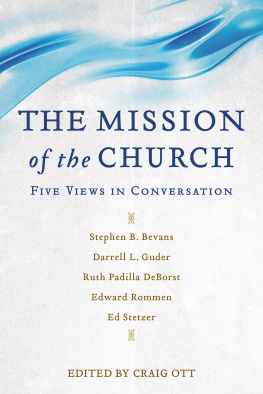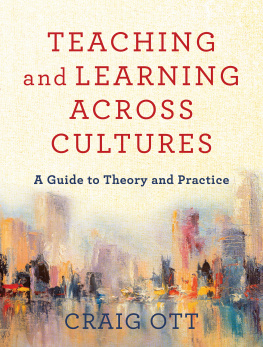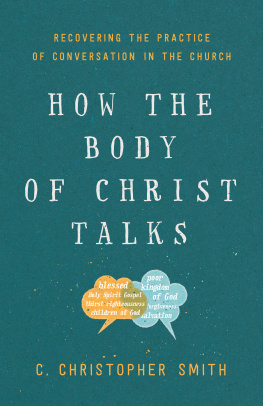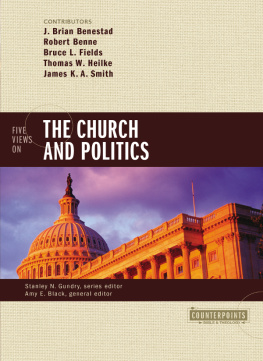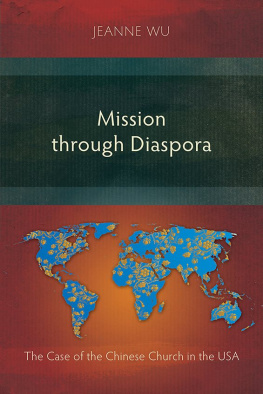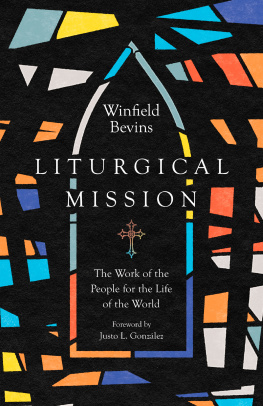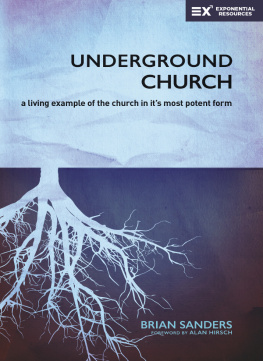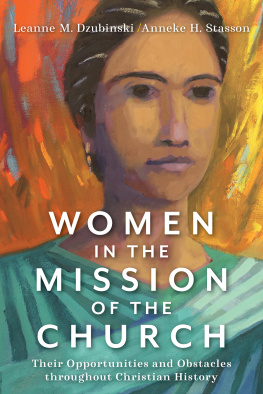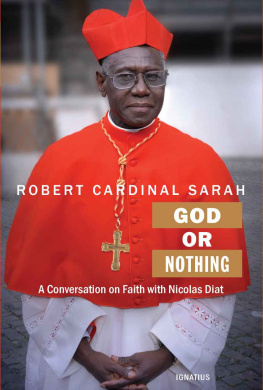Craig Ott - The Mission of the Church: Five Views in Conversation
Here you can read online Craig Ott - The Mission of the Church: Five Views in Conversation full text of the book (entire story) in english for free. Download pdf and epub, get meaning, cover and reviews about this ebook. year: 2016, publisher: Baker Publishing Group, genre: Religion. Description of the work, (preface) as well as reviews are available. Best literature library LitArk.com created for fans of good reading and offers a wide selection of genres:
Romance novel
Science fiction
Adventure
Detective
Science
History
Home and family
Prose
Art
Politics
Computer
Non-fiction
Religion
Business
Children
Humor
Choose a favorite category and find really read worthwhile books. Enjoy immersion in the world of imagination, feel the emotions of the characters or learn something new for yourself, make an fascinating discovery.
The Mission of the Church: Five Views in Conversation: summary, description and annotation
We offer to read an annotation, description, summary or preface (depends on what the author of the book "The Mission of the Church: Five Views in Conversation" wrote himself). If you haven't found the necessary information about the book — write in the comments, we will try to find it.
Craig Ott: author's other books
Who wrote The Mission of the Church: Five Views in Conversation? Find out the surname, the name of the author of the book and a list of all author's works by series.
The Mission of the Church: Five Views in Conversation — read online for free the complete book (whole text) full work
Below is the text of the book, divided by pages. System saving the place of the last page read, allows you to conveniently read the book "The Mission of the Church: Five Views in Conversation" online for free, without having to search again every time where you left off. Put a bookmark, and you can go to the page where you finished reading at any time.
Font size:
Interval:
Bookmark:
2016 by Craig Ott
Published by Baker Academic
a division of Baker Publishing Group
P.O. Box 6287, Grand Rapids, MI 49516-6287
www.bakeracademic.com
Ebook edition created 2016
All rights reserved. No part of this publication may be reproduced, stored in a retrieval system, or transmitted in any form or by any meansfor example, electronic, photocopy, recordingwithout the prior written permission of the publisher. The only exception is brief quotations in printed reviews.
Library of Congress Cataloging-in-Publication Data is on file at the Library of Congress, Washington, DC.
ISBN 978-1-4934-0577-0
Unless otherwise indicated, Scripture quotations are from the Holy Bible, New International Version. NIV. Copyright 1973, 1978, 1984, 2011 by Biblica, Inc. Used by permission of Zondervan. All rights reserved worldwide. www.zondervan.com
The word mission is not a biblical word but theological terminology, like Trinity and providence, that seeks to capture the Bibles teaching. But what exactly is it? This well-designed book offers a helpful guide to the rich discussion that has taken place across theological traditions over the past century. The representatives of the five positions are well-chosen. The helpful introduction by Craig Ott, the particular presentation of the different approaches, and the ensuing dialogue will orient the reader to the main issues in understanding mission today, but it will also offer much insight into a biblical understanding of mission which is the fruit of much theological labor. Highly recommended.
Michael W. Goheen , Missional Training CenterPhoenix and Surge Network
A great resource for understanding the current state of mission theology. Twenty-five years ago a convergence of thinking began to emerge regarding the mission of the church among Roman Catholics, Ecumenicals, Evangelicals, Orthodox, and Pentecostals. This important multi-author volume brings this discussion up to date as the authors stress the distinctives of their traditions but do so within some shared or related biblical and theological frameworks. It would serve well as a text for introducing this important subject in a missiology course.
Craig Van Gelder , Luther Seminary, St. Paul, Minnesota
Cover
Title Page
Copyright Page
Endorsements
Preface
Introduction, Craig Ott
Perspective Chapters
1. A Prophetic Dialogue Approach, Stephen B. Bevans
2. A Multicultural and Translational Approach, Darrell L. Guder
3. An Integral Transformation Approach, Ruth Padilla DeBorst
4. A Sacramental Vision Approach, Edward Rommen
5. An Evangelical Kingdom Community Approach, Ed Stetzer
Response Chapters
6. Response by Stephen B. Bevans
7. Response by Darrell L. Guder
8. Response by Ruth Padilla DeBorst
9. Response by Edward Rommen
10. Response by Ed Stetzer
Contributors
Subject Index
Scripture Index
Back Cover
Over the past fifty years a growing discussion has emerged in missiological circles over the nature of the mission of the church. This conversation has expanded to include church leaders and theologians who do not typically live in the world of missiology. Controversies are of both a theological and a practical nature with far-reaching consequences. Changes in the place of the church in Western cultural contexts along with developments in the Majority World church have heightened the relevance of the discussion for all who are concerned about the challenges and opportunities facing the church in the contemporary world. An overview of developments in this discussion is offered in the introductory chapter. Consensus among nearly all branches of Christianity has gradually emerged regarding the missionary nature of the church, which has its source in the very character and acts of the Triune God, in the missio Dei (mission of God). Yet at the same time differences remain regarding the practical implications of that conviction. This book is an attempt to explore those commonalities and differences.
Numerous views books have appeared over the years in which various positions on a theological topic are presented by leading thinkers, followed by contributor responses to one another. Typically the positions are in clear contradistinction to one another and often mutually exclusive, and the discussion takes the form of a debate. This collection of essays, though similar in structure, is somewhat different in spirit. Contributors were invited to enter a charitable dialogue with one another, engaging in direct conversation, exploring commonalities, and clarifying differences. There has been a stronger emphasis upon mutual listening and understanding, less on debate. Of course differences remainmany rooted in fundamental theological, confessional convictions beyond the scope of this volumeand those differences have not been glossed over. However, a spirit of dialogue and mutual appreciation is more dominant, while questions in need of further clarification and honest debate are identified and addressed in a nuanced manner.
The selection of contributors to this conversation was not easy. The fact that four of the five authors are white, male North Americans is an admitted weakness. On the other hand, readers familiar with the conversation will recognize the names of these contributors as leading thinkers and writers on the various positions. Strictly speaking, these views are not representative of different confessions, though the authors themselves are at home in various traditions: Stephen B. Bevans is a Roman Catholic, Darrell L. Guder a mainline Protestant, Ruth Padilla DeBorst a Latina evangelical, Edward Rommen an Orthodox, and Ed Stetzer a North American evangelical.
Finally, it may come as a surprise to some readers that I, as an evangelical, have chosen to edit such a volume. Evangelicals are not known for their enthusiasm for ecumenical dialogue! The simple explanation is that I believe where we differ on important issues, we should seek to understand, appreciate, and learn from one another. This does not entail compromising our own convictions. We sometimes discover that we have more in common than we thought, and we often come to understand and articulate our own viewpoint more clearly by engaging those with whom we differ. Much will have been accomplished if readers not only clarify their own understanding as a result of reading these pages but also grow in their appreciation of others.
Craig Ott
Deerfield, Illinois, 2016
CRAIG OTT
Johns Gospel reports how the resurrected Christ encountered his perplexed and fearful disciples after the turbulent events of his arrest and the horrific witness of his crucifixion. Christ victoriously conquered death and the grave, but what did this all mean for them and the future of their movement? The world appeared hostile. The disciples met behind locked doors. The messianic hope they had set on Jesus seemed dashed. Yet to them he says these remarkable words: Peace be with you! As the Father has sent me, I am sending you (John 20:21). These words ring in our ears today as no less humbling and daunting. What does this sending entail? How can we as simple followers of Christ, as a community of his disciples, rise to fulfill these words? At the most fundamental level, this is the question this volume seeks to explore: How are we to understand the mission of the church?
The Latin root of the word mission conveys the idea of sending. the church? What are those purposes for which God sends the church into the world, and how is the church to fulfill them? In what ways is the church to be an agent or sacrament of Gods redemptive purposes for the world?
Font size:
Interval:
Bookmark:
Similar books «The Mission of the Church: Five Views in Conversation»
Look at similar books to The Mission of the Church: Five Views in Conversation. We have selected literature similar in name and meaning in the hope of providing readers with more options to find new, interesting, not yet read works.
Discussion, reviews of the book The Mission of the Church: Five Views in Conversation and just readers' own opinions. Leave your comments, write what you think about the work, its meaning or the main characters. Specify what exactly you liked and what you didn't like, and why you think so.

